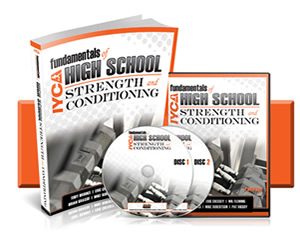 It is very common for athletes to experience lower back pain, especially when they begin a new training program or train harder than they have in the past. As muscles get sore and/or stiff from training, they will “hold onto” certain positions as a way to maintain different positions. Often, tightness in the internal hip/back muscles throws postural alignment off, which can lead to even more pain. This pain can be felt in various parts of the spine, but in this article, I will mostly focus on stretching muscle groups in the hips and lower back.
It is very common for athletes to experience lower back pain, especially when they begin a new training program or train harder than they have in the past. As muscles get sore and/or stiff from training, they will “hold onto” certain positions as a way to maintain different positions. Often, tightness in the internal hip/back muscles throws postural alignment off, which can lead to even more pain. This pain can be felt in various parts of the spine, but in this article, I will mostly focus on stretching muscle groups in the hips and lower back.
When stretching tight areas, it is not necessary to stretch to the point of great pain. Of course, many people feel a little uncomfortable while stretching, especially when they are tight, but it shouldn’t be extremely painful. There is absolutely no evidence to show that stretching “harder” will elicit better results. In many cases, stretching too hard can cause muscles to contract as a protective mechanism and may even lead to acute injuries.
Slowly ease into a stretch, and gradually increase the range of motion. There is evidence that suggests stretches of up to one minute will increase flexibility faster than very short times. It is also recommended to stretch often in addition to working through full range of motion movements. Correcting imbalances and/or alignment issues is also crucial to the process of alleviating tight muscles so be sure to assess and address these issues if tightness persists.
This diagram shows many of the internal muscles around the hip and lower back than often get tight or sore and contribute to lower back pain:

Lower back pain in athletes is often an indication that something in the core isn’t functioning properly. A variety of reasons that lower back pain may occur include:
- Imbalance of the hips
- Tightness of the structure around the hips
- Weakness of the core muscles- putting pressure on joints to attempt to stabilize external load
- Soreness of the lower back musculature when exposed to lower body pulling exercises
Of course, there is always the possibility of disk derangement, fracture/spondy, or other serious issues. If the injury is extremely painful, do not allow the client/athlete to stretch too aggressively or continue normal training, especially if the area is still very inflamed. Make sure to consult with a doctor or physical therapist before getting cleared to train them again.
It is recommended to train “around” lower back injuries with modifications rather than train “through” them without altering your program. An example would be replacing squatting movements (or any movement where weight is placed on the back) with exercises like lunges, leg press, or resistance-band work.
If the pain is less acute and more of an “achy” feeling, try working on these stretches to aid in releasing the hip structure around the lower back.
These exercises can be paired with movements like squats, deadlifts, or Olympic lifts to use rest time between sets more productively. This rest time can be very useful in mobilizing various aspects of the lower body in an effort to get more out of the training program. They can be used as a part of a comprehensive warm-up or cool down, and they can even be given as “homework” for specific athletes who need additional work.
In addition to these stretches, make sure you are strengthening the core alongside them. Until the core structure around the back is strong enough, loading the spine may continue to cause discomfort.
These mobility exercises should help keep athletes functioning properly and feel less stiffness or pain in their hips and lower back. Once you teach them and place them into a routine, your athletes will thank you for helping them stay healthy.
 Jordan Tingman – CSCS*, USAW L1, ACE CPT, CFL1 is a graduate of Washington State University with a B.S. in Sports Science with a Minor in Strength and Conditioning. She completed internships with the strength & conditioning programs at both Washington State University and Ohio State University, and is currently a Graduate Assistant S & C Coach at Eastern Washington University.
Jordan Tingman – CSCS*, USAW L1, ACE CPT, CFL1 is a graduate of Washington State University with a B.S. in Sports Science with a Minor in Strength and Conditioning. She completed internships with the strength & conditioning programs at both Washington State University and Ohio State University, and is currently a Graduate Assistant S & C Coach at Eastern Washington University.
The IYCA High School Strength & Conditioning Specialist is the only certification created specifically for coaches training high school athletes. The course includes several hours of video instruction (including the Olympic lifts) and two textbooks with contributions from some of the top strength and conditioning coaches in America. Click on the image below to learn more about how to become a certified high school strength & conditioning coach.

